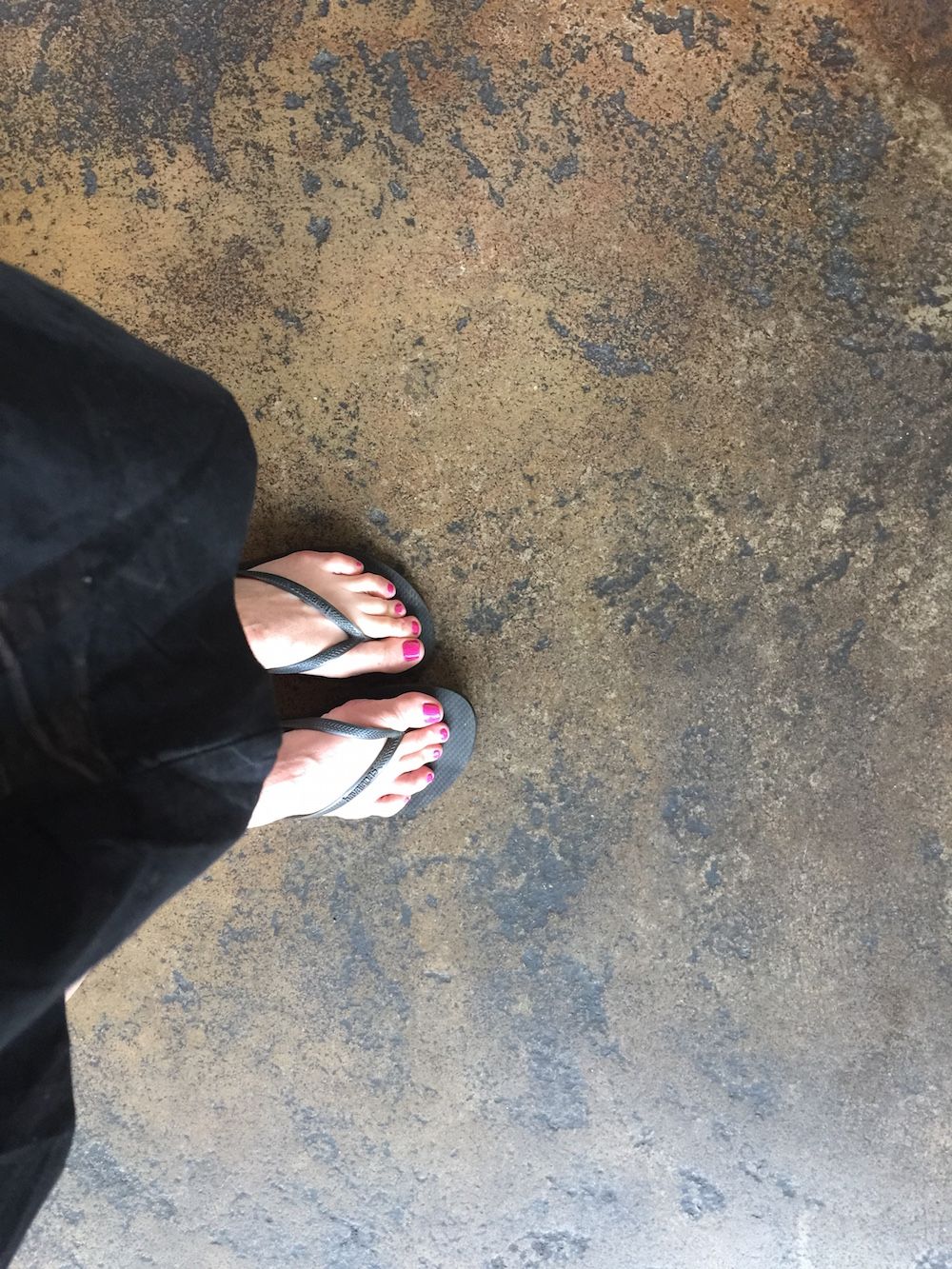Wednesday, June 3. The shoes I wore to meet the architect.

My house is not a piece of software. It is not a computer or an application program. But it is a legacy system. An architectural program designed for an outdated lifestyle. It is a machine designed for a life I do not live.
“In computing, a legacy system is an old method, technology, computer system, or application program, “of, relating to, or being a previous or outdated computer system.”[1] Often a pejorative term, referencing a system as “legacy” often implies that the system is out of date or in need of replacement.” – Wikipedia.
Initially built in the early 1900s, it has stood here on this hill on a hill, plugged into the city’s electrical, water and sewage systems. On a lot constrained to only 3,600 square feet, it has location going for it. And a spectacular view. But it has no idea what to do with my books or my shoes or my dogs or my bikes. It’s a house with Aspberger’s: greeting me awkwardly when I get home, uncomfortable looking me in the eye and asking what it can do for me today. A house with good intentions, yes, but a house that only either annoys me or gets in my way.
“In Europe, history is more apparent and tangible. It’s especially visible in architecture (schools, hospitals, town halls, churches): buildings are living things that evolve over time and according to the changing needs of people. Beyond architecture, a sense of time and heritage are everywhere in philosophy, cultural traditions, food, language. This is great and at the same time almost too much, as it can be a burden to innovation.
In France, a typical family dialogue could be something like this, ‘OK, let’s rebuild that house but remember, you’re inheriting it from your great grandmother (so it’s kind of disrespectful to demolish the building) and think of your great grandchildren who, one day, will come to visit your daughter in this house.’
Europeans will keep, maintain, restore while Americans will easily restart anything—life, house, job, education, and relationships— at anytime. Both approaches have their own pros and cons.”– Julia Moisand Egea
As it turns out, Mark is a great architect and good friend, but accustomed to bigger projects, bigger budgets, and fewer constraints. So we talked and decided it would be best for us to work with another architect. One with more experience with houses in general and on Queen Anne specifically. One who lives on Queen Anne himself and really gets why we want to stay and design small. Because residential architecture is a different thing. A smaller thing. A fickle thing. A personal thing. At this point in the process, realizing our small budget, we decided to part ways with one and join forces with another. Less “No, because….”, more “Yes! How?” Bonus: there’s a woman on the design team and I really, really like her.